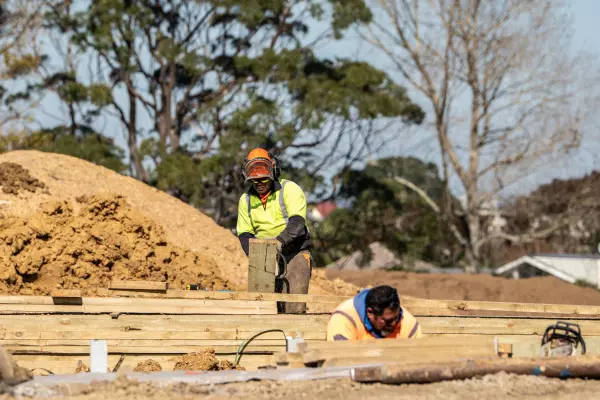First-time home buyers and savvy investors continued to act as the engine room for the housing marketing last month, driving a $1.4 billion splurge on mortgages to $6.8 billion, the highest level for late winter lending since the Reserve Bank started recording the data seven years ago.
This was reflected in a year-on-year increase in the value of new mortgage commitments to first home buyers of 45.6 percent, with investors up 42 percent, Reserve Bank data shows.
The trend also showed up in 80 percent-plus loan-to-valuation ratios, which were sitting at a combined $757 million last month, of which 73 percent were approved to first-home buyers.
High LVR lending has tracked up quickly from $272 million in April after central bank-imposed restrictions were removed for at least a year in May, and now sits at about 11 percent of all lending.
Kelvin Davidson, senior property economist with Corelogic, said given the move back up alert levels, “one could be forgiven for thinking that lending activity might have been much weaker than it has turned out to have been.”
But in reality, the 26 percent increase in new lending was largely driven by Aucklanders, with a quarter more borrowers than August 2019.
Davidson said the high mortgage levels had been foreshadowed by strong sales volumes and the number of valuations ordered by banks.
“Borrowers are being encouraged into property by super-low mortgage rates and especially for investors, the low returns available on other assets, such as term deposits.”
Given the likelihood of further rate cuts, the “sweet spot” for most borrowers seems to be shorter mortgage terms, reflected in more than half, 54 percent, of all existing mortgage debt currently fixed for up to one year.
Fixed rates below 2 percent
The RBNZ numbers show that only 14 percent of debt is currently floating, the lowest share since 2008.
ASB Bank, for one, expects fixed rates to fall below 2 percent next year, if the official cash rate is cut to minus 0.5 percent in April, as forecast.
The bank’s latest household sector outlook paints a generally positive longer-term picture, suggesting households injected more funds into property than they have withdrawn, and indicating that "the housing market is not being used to directly finance consumers spending.”
It warns however, that while banks have provided a lifeline to struggling mortgage holders via the loan deferral scheme, which has now been extended a further six months to March next year, this debt will still need to be paid back.
Nor has housing affordability improved to the extent ASB had expected, given the record low mortgage interest rates.
“Debt servicing is low, but finding the deposit is a mammoth task for those first home buyers who do not have recourse to the bank of mum and dad.”
Auctions lively
Mortgage broker Kris Pedersen said auctions were seeing clearing rates of about 80 percent as demand for property was growing.
“We are hearing stories of people who are not normally property investors who are looking for places to put capital,” he said.
Pedersen said the Takapuna-based firm was the busiest it had been since early 2016 as people looking to secure loans sought help to navigate banks' cautious loan conditions.
“Some banks are a lot more onerous than others and are, in my opinion, going over the top,” he said
Bruce Patten, a broker at Loan Market, said loan volumes were higher in August than they had been pre-covid driven by low interest rates.
Patten said one developer had settled a deal for a Te Atatu property just one month ago for $1.12 million but had to offload it suddenly to free up some capital. That same property sold at an auction on Monday for more than $1.5 million.
With additional reporting by Dan Brunskill














